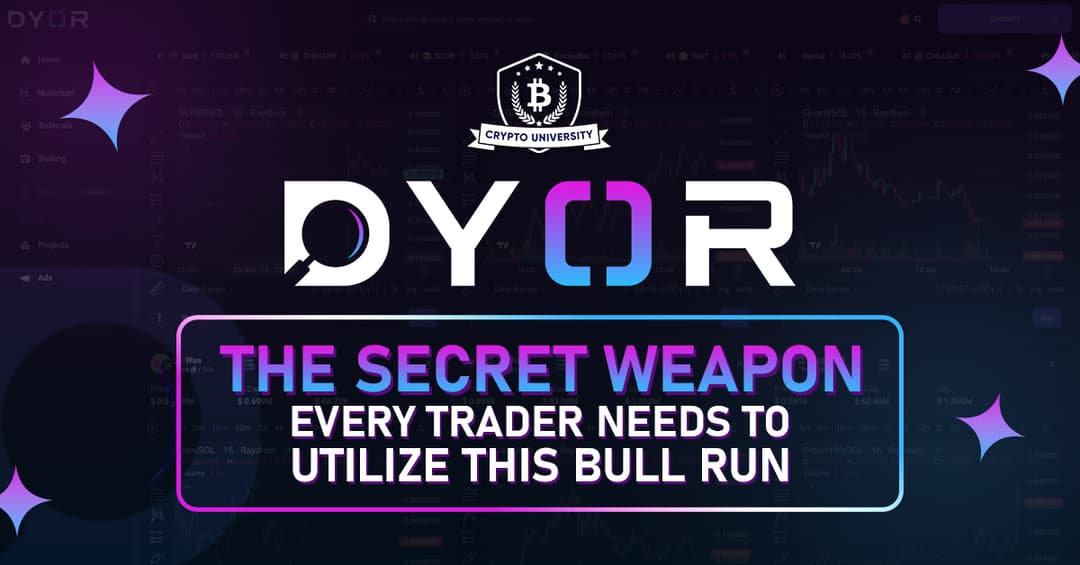No Adverts are available No Adverts are available
No Adverts are available
What Are Wrapped Coins And How Do They Work?
Mary Idomo • 23 June 2023
 No Adverts are available
No Adverts are availableIf you've heard the term "wrapped coins" thrown around in the crypto space, you might be wondering what they are and how they work. In this article, we'll break it down for you. Wrapped coins are tokens that represent other cryptocurrencies or assets on a different blockchain. They bring the value of these assets to other networks, allowing you to use them in diverse decentralized applications (dApps) and DeFi platforms. But how exactly do they work? Let's dive in and find out.
What are wrapped coins?
In simple terms, wrapped coins are tokens that represent other cryptocurrencies on a different blockchain network. They make it possible to use cryptocurrencies on blockchains other than the blockchain they were originally built on. Wrapped coins are created by locking up the original cryptocurrency and issuing an equivalent amount on a different blockchain.
These special coins are created by "wrapping" an original cryptocurrency in a digital vault. The vault is controlled by a custodian, who is responsible for ensuring that the original cryptocurrency is always backed by the wrapped asset. Once the original cryptocurrency is wrapped, it is minted as a new token on the target blockchain.
They are often pegged to the value of the original cryptocurrency, so one wrapped coin will always be worth the same as one original cryptocurrency. This means that you can use wrapped coins to trade, lend, or stake them just like you would the original cryptocurrency.
Imagine you want to use Bitcoin on the Ethereum blockchain. You can't do that directly, because Bitcoin and Ethereum are two different blockchains. Wrapped coins solve this problem by allowing you to "wrap" your Bitcoin on the Ethereum blockchain. This creates a new token called "wrapped Bitcoin" (WBTC), which is backed 1:1 by Bitcoin. You can then use WBTC on the Ethereum blockchain just like any other ERC-20 token.
Other popular wrapped assetss include: Wrapped Ether ( WETH), Wrapped BNB (WBNB), Wrapped MATIC (WMATIC), Wrapped AVAX (wAVAX), renBTC, and renZEC.
How do wrapped coins work?
The process of creating wrapped coins is called "wrapping." This involves depositing your original cryptocurrency into a smart contract. The smart contract is a piece of code that lives on the target blockchain. It defines the rules for how wrapped coins are created, redeemed, and transferred.
The original cryptocurrency that you deposited is held in a digital vault by a trusted entity or custodian. This ensures that the value of the wrapped tokens is fully backed by the original asset. It's important to note that the custodian is responsible for safeguarding the original cryptocurrency and ensuring the wrapped tokens can be redeemed for the original asset at any time.
Examples of custodians for wrapped coins include Coinbase Custody, BitGo, Kyber Network, and Synthetix.
With the wrapped tokens in your possession, you can freely trade and use them within the target blockchain ecosystem. They inherit the properties and functionality of the blockchain they are deployed on, allowing you to participate in various DeFi activities.
When you no longer need the wrapped tokens, you can initiate a process called "unwrapping." This involves sending the wrapped tokens to a smart contract address and receiving the equivalent amount of the original cryptocurrency back into your wallet. The custodian facilitates this process by releasing the original asset from custody, ensuring a seamless conversion between the wrapped tokens and your original cryptocurrency.
Benefits of wrapped coins
Wrapped coins offer several benefits for cryptocurrency users like you. Here are some advantages you can enjoy:
Diverse Investment Opportunities: Wrapping coins opens up a world of new investment opportunities for you. With wrapped tokens, you can participate in various decentralized finance protocols, yield farming, liquidity mining, and other DeFi strategies. This allows you to diversify your cryptocurrency holdings and potentially increase your returns.
Enhanced Privacy: Some wrapped coin protocols offer improved privacy features. By wrapping your tokens, you can benefit from enhanced anonymity and secrecy while transacting on the blockchain
Increased Accessibility: Wrapped tokens make it easier for you to access different cryptocurrencies on various blockchain networks. By wrapping your coins, you can bring them onto a specific blockchain platform that may not natively support that particular cryptocurrency.
Liquidity: Wrapped coins can increase liquidity on decentralized exchanges (DEXs). This is because DEXs can offer wrapped assets for trading, which can attract more users and volume.
Faster transactions: Wrapped coins can often be used to transact on blockchains with faster transaction speeds. For example, the transaction speed for wrapped Bitcoin on the Ethereum blockchain is much faster than the transaction speed for Bitcoin on the Bitcoin blockchain.
What are the risks and challenges of Wrapped Coins?
While wrapped coins offer exciting possibilities, there are a few risks you should consider when using them:
Trustworthiness of the Custodian: When you wrap your coins, you entrust them to a custodian who holds the underlying assets. The custodian's reliability becomes crucial because they are responsible for safeguarding your assets. You need to research and select reputable custodians to reduce the risk of fraud or mismanagement.
Smart Contract Vulnerabilities: Wrapped tokens operate using smart contracts, However, smart contracts are not immune to issues. Bugs or coding errors could potentially expose your assets to risks, including the loss or theft of your funds. Stay updated with security best practices to avoid these risks.
Liquidity limitations: They rely on liquidity providers to ensure smooth transactions and availability of the underlying asset. Insufficient liquidity can result in delays, slippage, or even the inability to trade or redeem your wrapped tokens when desired. Always consider the liquidity of a wrapped asset before engaging in transactions.
Counterparty risk: When you convert your cryptocurrency into a wrapped asset, you are essentially entrusting your funds to a third party. This introduces counterparty risk, as the custodian or issuer of the wrapped coin could face financial difficulties, hacks, or exit scams, resulting in the loss of your funds.
Technical complexity: Wrapped coins can be quite complex to use for some crypto users.
How to Use Wrapped Coins
To use wrapped coins, follow these simple steps:
Choose a platform: Find a trusted cryptocurrency exchange or decentralized finance (DeFi) platform that supports wrapped coins. Do your research and select a platform that suits your needs. Then connect your Decentralized wallet like Metamask to it.
Select a wrapped coin: Identify the specific wrapped asset you want to use. Wrapped Bitcoin (WBTC) and Wrapped Ethereum (WETH) are popular options, but there are many others available, depending on the platform you're using.
Deposit the original cryptocurrency: If you already own the original cryptocurrency, such as Bitcoin or Ethereum, deposit it into your wallet on the platform. This will be used to mint the wrapped coin equivalent.
Convert to wrapped coins: Once your deposit is confirmed, navigate to the Swap section of the platform and specify the amount of the original cryptocurrency you wish to change to wrapped tokens. Pay attention to any fees associated with the transaction. If you're satisfied, proceed with confirming the transaction.
Wait for confirmation: The platform will process your transaction and generate the equivalent amount of wrapped coins in your wallet. This process typically takes a few minutes, but it may vary depending on network congestion.
Use your wrapped assets: Now that you have wrapped coins in your account, you can use them for various purposes. You can trade them, provide liquidity in decentralized exchanges, participate in yield farming, or do other DeFi activities supported by the platform.
Withdraw or unwrap your coins: If you decide to convert your wrapped assets back into the original cryptocurrency, you can do so by following a similar process in reverse. Navigate to the appropriate section on the platform, input the amount you want to unwrap, confirm the transaction, and wait for the wrapped tokens to be burned, resulting in the release of the original cryptocurrency.
What is the Future of Wrapped Coins in DeFi?
The future of wrapped coins in DeFi is very promising. As the ecosystem continues to grow and mature, wrapped coins will become an increasingly important part of the way we interact with DeFi platforms.
The development of new wrapped assets, such as wrapped stocks and commodities, could open up new opportunities for DeFi. For example, wrapped stocks could allow users to invest in stocks through DeFi protocols, while wrapped commodities could allow users to hedge against market volatility.
Furthermore, the security of wrapped coins is still a concern, but several projects are working to improve the security of wrapped coins. This will help to increase the adoption of wrapped coins in DeFi.
If you want to learn about crypto from the biggest crypto experts, join the Crypto University membership now.
Share Posts
Copy Link
cryptouniversity.networkblog/what-a...

Isaac Bandie • 26 May 2025
VeBetterDAO: The Future of Blockchain-Driven Sustainability
Small actions. Big impact. With VeBetterDAO, every eco-friendly choice earns you rewards. Join the movement that turns good habits into blockchain-powered incentives. vebetter.com

